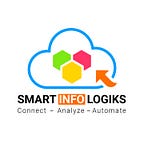How IoT is Making Field Force Management Advances Across Industries
IoT is an amalgam of opportunities, including the field force of management. IoT is proficient enough to drive smart services if applied efficiently, and it helps field technicians accomplish more and more. Field force management software when integrated with embedded IoT business is capable of generating huge volumes of data from equipment. Devices equipped with these sensors are interlinked through the NET, where they facilitate communication and forwarding notifications devoid of any human interference.
For example, for healthcare professionals to deliver the best possible care, they need access to relevant data about patients. IoT facilitates real-time monitoring of the condition using a smart medical device connected to a smartphone application. These devices collect medical and other necessary health data like blood pressure, oxygen, blood sugar, etc. It then uses a smartphone data connection to transfer the collected information to a physician. This data can also be stored on the cloud to be transferred to authorised personnel like physicians, insurance companies, and external consultants, thereby enabling them to sight the collected data irrespective of the place, time, or device. Additionally, during an event of an emergency, patients are allowed to contact a doctor kilometres away with a smart mobile app.
The Oil and Gas industry uses IoT sensors to eliminate the risk of field technicians getting exposed to dreadful environments regularly. Robots and sensors help analyze surface and subterranean environments saving millions of dollars.
Seismic nodes seize a large number of local geology images at each level of field development which can be later used to identify the location and size of oil and gas reservoirs. These sensors avail measurement of physical impacts like temperature, pressure, chemical composition, and acoustics. Besides, these sensors can be installed internally or externally to feel, sense, and varying facets of oil pipelines as well as detect potential pipeline breaches and alarm the workers with IoT devices.
The physical presence of the workers is essential to deal with flare stacks in petroleum plants, chemical refiners, and natural gas processing plants. The field force management software integrated with IoT helps leverage digital transformation aiming to streamline processes and drive smart decisions like ensuring workers visit flare stacks when there’s a need for maintenance.
Another ground-breaking example of IoT utilization is waste water management plants. The field workers are allotted the daunting task of dealing with dreadful conditions like checking for flaws, clogging, water quality, and manual cleaning. When IoT-enabled sensors are installed at the optimum location to identify any potential flaws or glitches, they signal the device contains a chip that connects to the internet, this enables the field workers to understand when it requires servicing. This ensures a hassle-free customer experience without any hitches. IoT sensors installed throughout sewer plants, pumps, and valves can alarm the operators that it needs cross-evaluation and identify the exact damaged spot, thereby eliminating constant manual monitoring of equipment and conditions.
